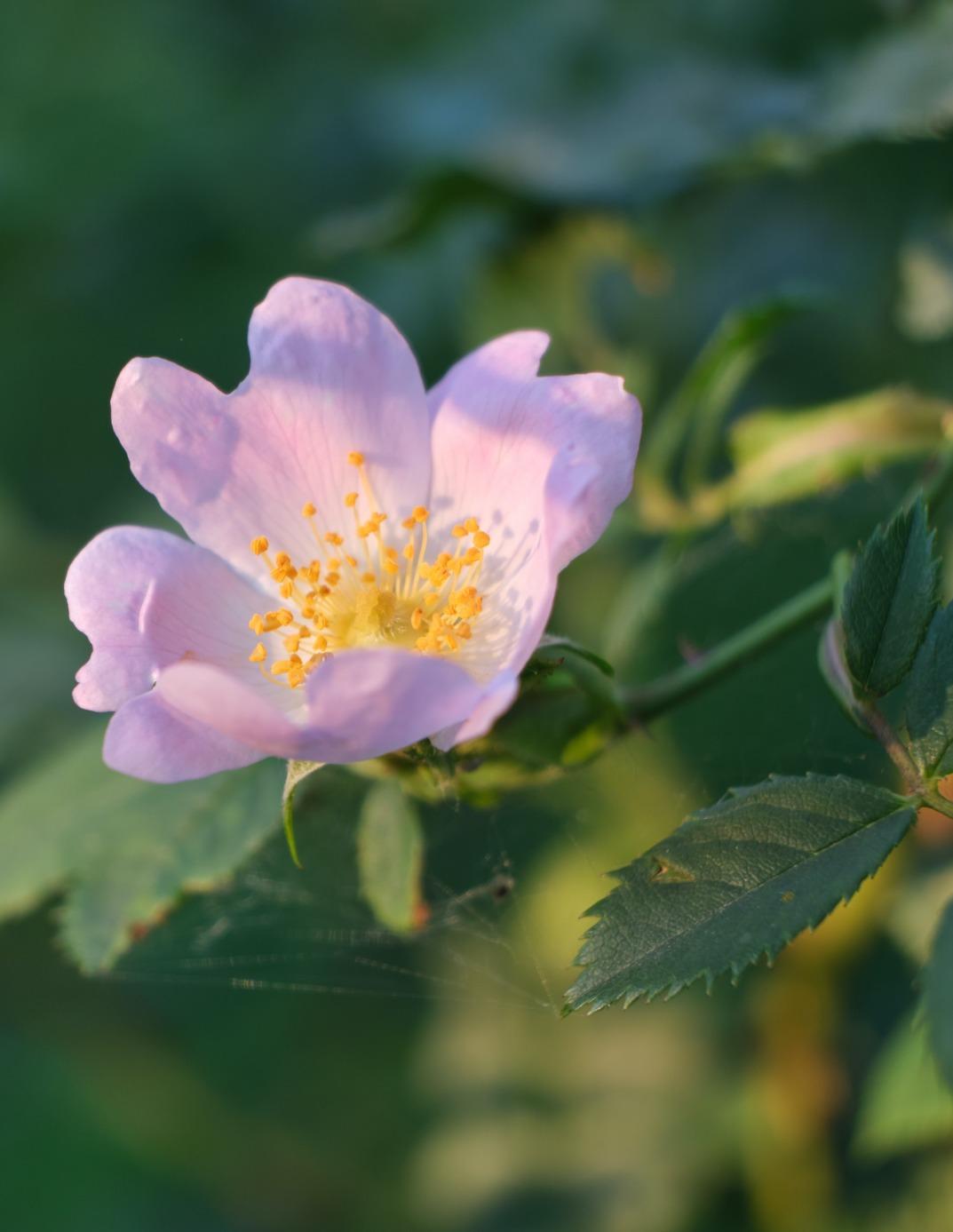4 minute read
Betweenthismonth’scovers…
June Almanac Page 5
Daisies Seed Packet Embroidery Page 8
By any other name… the Rose Page 11
The Crimson Rose Page 15
Fairytale Goose Head Page 17
Lovely Idea: Flower Vase Quilt Page 20
A Fine Yarn: the art of Spinning Page 21
Lovely Idea: Scrap Twine Page 25
Pins and Needles Page 26
Hollyhocks Cushion Cover Page 27
In the Month of the Strawberry Moon Page 32
Summer Flamingo Hoop Page 46
Summer Rain Page 49
Those Summer Days Page 50
Blooming Lovely: The Elderflower Page 54
Wild Rose Book Mark Page 55 parts of the country flowers, especiallywhiteroses,arestillworn to mark St Barnabas Day. The mowing season was an important time in the seasonal calendar as a good supply of dry hay stored safely against the winter months wouldensurethatthefarmanimals wouldremainwellfedwhenunable to go out to pasture. Heavy rain, which flattened the grass and madeitimpossibletocutbyscythe would have been a disaster.
This month is named after Juno, the wife of the Roman king of the gods, Jupiter-andperhapsafterallitisthe queen of the months. The hedgerows are smothered in wild roses,elderflowers,honeysuckleand guelder rose, and along the banks beneath there are countless wild flowers : clover, vetches, moon daisies, grasses of all kinds, meadowsweet with its heady scent -allcreatingabonanzaforbeeswho areoutandaboutthewholedaylong collecting pollen and nectar. However, in spite of this, as Vita Sackville West wrote a century ago in her poem “The Land”….

Thoughtheyearhasturnedalready and, by the end of this month, the days will be shortening again, still winter is a very long way off and there’s plenty of time to enjoy the summer days that lie ahead.
June is rich in weather lore because it’s such an important time in the crops. “A leak in June brings harvest soon,” and “a dripping June sets all in tune,” are two old sayings. Certainly sudden and often torrential thunderstorms are typical of this month and superstition tells us that rain on the eighth foretells a wet harvest. But, whatever the weather, June is a busy month for the farmer.
It is to be hoped however that any rain had dried up by the eleventh. This is St Barnabas Day which traditionally marked the first day of the hay-cutting season. In some
St Barnabas himself (martyred in AD71) was an early Christian disciple, but not one of the twelve Apostles. A dozen or so ancient English churches were dedicated to him which indicates that he was known here, but wasn’t especially popular. Nevertheless, in fifteenth and sixteenth century London St Barnabas’ Day was an important feast. Churches were decorated with garlands of roses, woodruff (a woodlandherbwithsweet-scented leaves and small white flower) and lavender. Maidens went “gatheriing” for church funds, and money was paid out for “bread, wine and ale for the singers of the King’s Chapel and for the clerks of the town.”
Fruit is ripening on wild cherries now, and you will see a range of birdsincludingpigeons,blackbirds and thrushes feasting on them. Smallgreensloesareappearingon blackthorn, promising the chance tomakesloeginintheautumn,and later this month the hedgerows will be festooned with the creamy flowers of travellers’ joy entwined with dog roses and wild honeysuckle.

Thougheverymonthoftheyearhas interestandbeauty,it’shardtobeat June for the sheer abundance of its beauty. The summer solstice falls on 21 June, when there is 16 hours and 32 minutes of direct sunlight (andslightlymoreofindirectdaylight atthebeginningandendoftheday). Thishasbecomeamajorfestivalfor modern pagans who gather at Stonehengeandotherancientsites to greet the rising of the sun on the longest day.
People have come to Stonehenge for centuries, even millennia, to mark this high point of the solar calendar when, here in the northern hemisphere, the days are at their longest. As the sun sets on the solstice day, white-robed modern druids gather among the standing stones to perform a unique ceremony. A central candle is lit and that flame is passed along a circleofsurroundingcandles. There is all-night celebrating and the first rays of the new sun are celebrated with song and dance at dawn. Historically the solstice marked the time when important herbs planted at the spring equinox could be picked for healing rituals and ceremonies.
Anotherimportanthistoricalcustom ofMidsummerwastheprocessions. These originated in urban areas in the musters of the local watch who were commanded to accompany the mayor and aldermen in procession on Midsummer and St Peter’s Eve as a show of civic dignity and pride. Trade guilds also held their own parades, and if they had sufficient resources, their
“Veryhungry,accustomed toEnglishpost-warfood, Gracethoughtthemeal whichfollowedthemost deliciousshehadevereaten Thefood,thewine,theheat, andthebabelofFrenchtalk, mostofwhichwasquite incomprehensibletoheruntunedear,inducedahalfdrunk,entirelyhappystate ofhaziness” such as watching in the church porch at midnight to see who might die in the year ahead. Love divinations were also popular, such assewingthehempseed-whereby girls threw hemp seed over their shoulders out of doors at night in the hope of seeing the form of their future husbands. processions were spectacular torch-lit affairs with giants, devils, hobby horses, drummers, trumpeters, armed mounted and marching companies and tableaux depicting famous scenes.
It was also said that if a young woman, blindfolded, picked a full blown rose on Midsummer Day while the church clock strikes twelve, folds the rose up in a sheet of white paper and doesn’t take it out again until Christmas then it will be found as fresh as when gathered. Then, if she places the rose on her bosom, the young man to whom she will be married will come and snatch it away.
Midsummer’s Day and Eve were also times when particular divinations could be carried out,
The third Sunday in June brings Father’s Day, first suggested by Sonora Dodd of Washington in appreciation of her own father to complement the new Mother’s Day which was beginning to become popular at that time. Father’s Day took much longer to become popular than Mother’s Day, but it was finally recognized by a joint resolution of Congress in 1956, receiving Presidential support in 1966 and 1972. Father’s Day crossed the Atlantic to the UK sometime after WW2, not without opposition as it was regarded as a “card-day” too far.

“Soshewasconsideringinherownmind…whetherthe pleasureofmakingadaisy-chainwouldbeworththetrouble ofgettingup&pickingthedaisies.”

LewisCarroll


